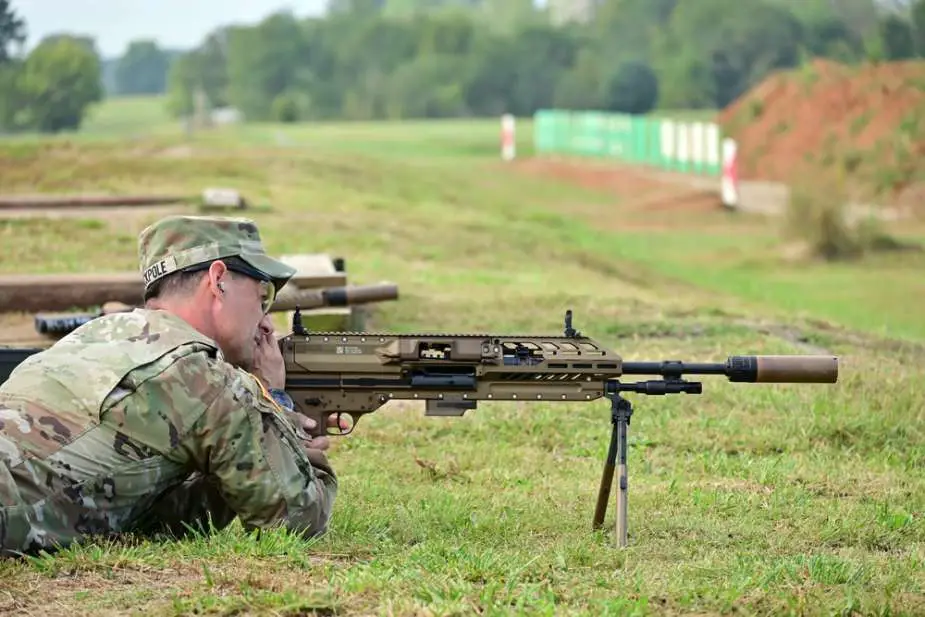Then why must the whole army change it's rifle to fight there?
How often are
you planning on fighting in the Graveyard of Empires?
Had the Afghan government not offered sanctuary to a certain jihad-proclaiming asshole that the US government wanted very, very dead, the US would have been happy to let them fester. (And honestly the US should have also wiped out Pakistan's intelligence agencies for funding the Taliban after they were kicked out of power, but that's a different discussion entirely).
Again, the lessons of past wars are being ignored. Should the infantryman have a rifle that is able to kill a horse at 1,000 yards?
Before 1914, that answer was yes. Machine Guns were either part of the artillery or there were 2-4 per infantry battalion at most.
In 1914-1918, that answer was still yes, but machine guns were now the primary killer of infantry in the open, and machine guns used the same ammunition as the basic infantry rifle. Lots more machine guns per battalion, as well.
After 1918, that answer was turning to "no, let the machine guns shoot at horses and infantry in the open and give the infantry rifle a smaller/lighter round more suitable to semi-automatic rifles." The US semi-auto program was going to use .276 Pedersen, 125gr/8g at 2740fps/840mps (roughly same power level as 6.5 Arisaka or 6.5 Carcano). Most other semi-auto rifle programs were using ammunition of that power level, though over time it became possible to make semi-autos work with the existing .30-06, .303, 7.92, 7.62x54R etc. Once it was demonstrated possible, the various Army Chiefs of Staff preferred to keep using all that existing ammunition. Especially in the US, which had made absolutely enormous stockpiles of .30-06 in advance of the 1919 offensive and had all that in warehouses. (My plan to get the US onto the .276 Pedersen would have been to tell Congress, "We're using all that old ammunition in the machine guns until it's gone, then we'll convert the machine guns to .276 and go from there.")
In WW2, that answer was "NO, let the machine guns do that, the infantry get a
select-fire rifle good out to about 300m." Like the Maschinenkarabiner-42/43 or the Sturmgewehr-44. The Russians had actually designed a pretty nice cartridge for this back in 1943, but it took until 1947 before the "killer app" for the 7.62x39 M43 cartridge was in production: The AK47. Oddly enough, the Russians designed both a basic semiauto rifle as well as a submachine gun for the M43. The semiauto rifle is the SKS, the submachinegun is the AK47. The SKS basically only lasted until the AKM came out in the 1950s, once the Soviets realized that the AK was perfectly capable of being that semiauto rifle as well as the submachine gun, all in the same gun. Then they very quickly retired the SKS from everything but drill/color guard units.
Post WW2, there was some discussion about giving the infantry rifle a cartridge with about the same range as that old .276 Pedersen, roughly 600m for machine guns (or rather, grazing fire that will always be within man height of the ground out to at least 600m), the .280 British. This round would have replaced all basic infantry rifle and machine gun ammunition, and been the NATO standard. In addition to one rifle that all of NATO was supposed to standardize on, either the EM2 or probably the FN FAL. But then this dishonest asshole by the name of LtCol Rene Studler pitched a screaming hissy-fit that Ordnance would not accept any cartridge of less power than the .30-06 or any bullet of less than .30 caliber, and proceeded to
blatantly manipulate test criteria until it showed that the .30-06 (or T65 7.62x51) was the superior cartridge. (The British
really should have arranged to have him get in an automobile accident on the way home one day instead of just posting Official Complaints...) Ordnance also pitched a hissy fit about not wanting to use a stamped steel bullpup rifle OR that stamped steel FN-FAL "because they could turn M1 Garands into M14s", so the plans for all of NATO to use the same rifle went out the window.
After it took a good 10 years
for the US to turn M1 Garands into M14s (and they never really did, all the M14s were new production!), the US got involved in cleaning up this little Communist uprising in what was left of French Indochina. And that's when the USAF security police, their base guards, needed to replace their now 20+yo M2 Carbines with something new. It needed to be light to carry and easy to shoot even in full auto. This gentleman by the name of Gene Stoner was working for Fairchild-Republic's Armalite division, and he'd come up with a nice light select-fire rifle, the AR-15, and chambered it in a "varmint caliber" of .222 Magnum or .223 aka 5.56x45mm. Shortly after that point, the US Army discovered that the M14 was completely uncontrollable in full auto (big shocker), and wanted to get something like the M2 Carbine all over again. Hey, the USAF just bought a whole bunch of this AR-15, that'll work!
And then the US Army bough M16s (the M15 was an M14 with a bipod and heavier barrel to replace the BAR, it wasn't controllable so they replaced the BAR and most of the M1919s with the M60 machine guns instead). They bought M16s for EVERYONE, not just those troops being sent to Vietnam for foot patrols.
So right.
What lesson from history is the US Army ignoring again? That all infantry combat takes place within about 300m.
